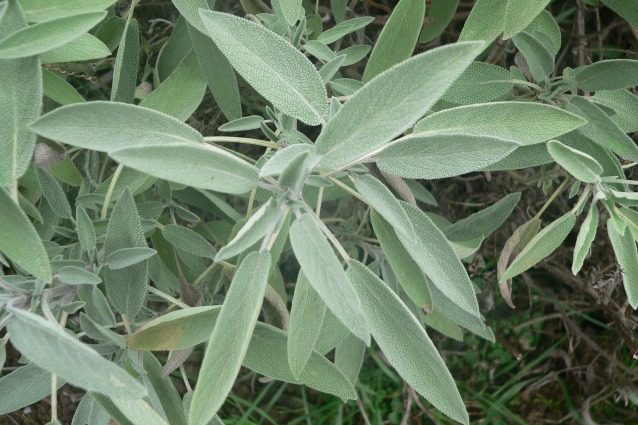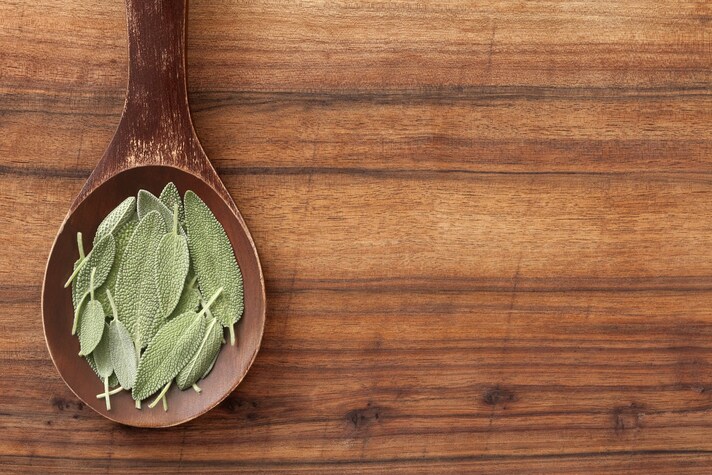Sage: properties and benefits of the plant that fights osteoporosis
Do you know all the healthy properties of sage? It is useful against coughs, colds and asthma. It also stimulates the production of gastric juices, helps the intestine and is useful against female pains. Here's everything you need to know about sage.
;Resize,width=742;)
Sage belongs to the Labiatae family and it is an evergreen shrub that can reach 70 cm in height, its leaves are shaped like small spears and are thick and hard. Sage blooms in Spring, it is found mainly in the Mediterranean areas and it is cultivated in the vegetable gardens. It has a life cycle of 5 years, after which it must be replanted. It belongs to aromatic herbs such as rosemary, thyme, basil, laurel and lavender and it has many healthy properties. Its name derives from the Latin word salvus that means “healthy” and, even in ancient times, it was believed that it could cure all diseases and it was considered a panacea to cure fever and cough. Some people attributed to the sage the power to resurrect the dead and used it to prepare magical rites. It has anti-inflammatory, antibacterial, expectorant, balsamic properties and so on. Among the components of sage we find vitamins B1 and C, essential oil, resins, oestrogen substances, flavonoids, rosmarinic acid, glyceric acid, salvin, enzymes.
Healthy properties of sage

Sage is antibacterial and anti-inflammatory: thanks to its bactericidal properties, sage is excellent for fighting coughs, colds, sore throats and respiratory tract diseases: tisanes are useful for the throat, while for coughs and colds it’s a better a fumigation with a few drops of oil essential. In addition, sage is useful in case of wounds and cuts on the skin because it disinfects and also promotes the healing process. Its antispasmodic properties are also useful for treating asthma, while its anti-inflammatory properties give relief if you suffer from rheumatism.
Sage fights osteoporosis: sage helps fighting osteoporosis, which mainly affects post-menopausal women, because it reduces oxidative stress and also the loss of bone mineral density, which causes fractures. For this reason, sage proves to be an excellent natural remedy to prevent it.
Sage helps stomach and intestines: sage has digestive properties, it stimulates the production of gastric juices and it is therefore indicated to promote digestion but it is also useful for its gastroprotective function. Among the therapeutic properties, sage proved to be excellent against spasms helping to control stomach and belly cramps, but also diarrhea. Thanks to its carminative function, the sage also reduces intestinal gas and it deflates abdomen swelling.
Sage reduces menstrual cycle and menopause disorders: many women suffer every month due to premenstrual syndrome and period pains. Sage, used mainly in the form of tisane or infusion, helps to calm irritability, headaches, abdominal pain and swelling, as well as rebalancing the menstrual cycle. Sage also prevents and limits the symptoms of menopause including hot flashes, thanks to flavonoids. Sage has also proved to be an excellent remedy for relieving vaginitis.
Sage stimulates the nervous system and fights tiredness: sage helps to reduce tiredness, exhaustion and apathy because it can stimulate the central nervous system giving even more energy, helping the memory and also reducing anxiety and depression. In Chinese medicine, sage was also used to fight insomnia. Sage is also useful for recovering after periods of convalescence.
Sage reduces glycemia: especially when taken as an infusion on an empty stomach, sage has proved useful to reduce blood glucose levels, thus helping those suffering from diabetes.
Sage fights water retention and purifies: some acids contained in sage give it diuretic properties useful to fight water retention but also edemas.
Sage is a panacea for skin, teeth and hair: sage is used as a cosmetic also for its anti-sweating, anti-bacterial and deodorant properties. It is also included in lotions and shampoos for greasy hair and hair that tend to fall for its sebum-normalizing, antiseptic and purifying properties, which make it also useful in cosmetics to fight acne and normalize oily skin. The sage essential oil is also used for its antioxidant properties in anti-aging creams. Sage can also be used for our beauty and the care of teeth and gums in case of abscesses, aphtas and gingivitis thanks to its healing properties. Rubbing sage leaves on the teeth also makes them whiter and gives a fragrant breath, especially if chewed.

How to use sage
In the kitchen the sage leaves give an intense and spicy flavor to our dishes and they can be used fresh or dried, and you can also prepare infusions with deflating power. Sage is a very versatile aromatic herb, and among the ways to use it in the kitchen we can fry the fresh leaves by passing them first in batter to get a snack of fried sage. It can be used to season and flavor meat dishes, cheeses, eggs, and the dried leaves can also be used to season white or red sauces. It is good to add it in small doses because sage aroma tends to overwhelm the dishes aroma, moreover it is preferable not to cook it for a long time to prevent it from becoming bitter. Its leaves can also be used to flavor oil, vinegar and butter. Sage is also very good for seasoning legumes, always in small quantities.
Side Effects
This aromatic herb is contraindicated for those suffering from diseases affecting the nervous system and should be used with caution by lactating women because it could block milk. Sage is not recommended in case of kidney failure, and the essential oil – if used excessively or for a too long period – could cause neurotoxic manifestations that could also cause episodes of epilepsy.
;Resize,width=767;)
;Resize,width=712;)
;Resize,width=712;)
;Resize,width=712;)
